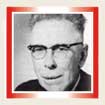|
1 |
2 | Page 3
[<<Previous]

Other Activities
In 1905 the Barber Asphalt of Pittsburgh tried to
extract oil but failed in its experimenting
activities (this paving company later went worldwide
under the trade name, Barber-Greene).
The Northern Alberta Exploration Company drilled
between 1907 and 1912, discovering a rock salt
deposit. By 1924 the Alberta Salt Company had been
formed and produced 3,000 tons of salt over a
two-year period.
The Athabasca Oil & Asphalt, the Fort McKay Oil &
Asphalt, Alcan Oil Corporation, and the Northland
Oil Syndicate, drilled a number of wells but no
results are known.
Imperial Oil finally got around to drilling two
test holes in 1917, 72 miles south of Fort McMurray
having found no oil.
A.F.A. Coyne heard about the Great Northern Oi1 &
Asphalt Co. and became interested in its activities.
He visited the area and was said to have been
convinced the 'mother lode' would be found near
these outcrops. The Anglo-Dominion Development
Company moved in and took over Coyne's 240 000 acres
of leases. An engineer's report stated, "We cannot
advocate any further expenditure in this area".
Coyne was unsuccessful in other aspects even though
he wanted to help Aberhart in 1936. The Premier
turned him down and that was the end of his
activities in Alberta.
It would be Dr. T.O. Bosworth, an English
consultant, who later was retained by Imperial. He
estimated 30,000 tons of oil per acre could be
extracted. Bosworth thought that this oil in the tar
sands was unique, differing from conventional
crude....."We have here some new thing and this
peculiar substance has not undergone any such great
evaporation which has accumulated in it, thickened
only to a slight extent by evaporation". Assuming
15,000 square miles, average thickness 50 feet,
average yield will be 10 gallons per ton. This
equates to 30 billion barrels of oil (600 times the
world's annual production).
Dr. Allan, in 1920, estimated at least 190 cubic
miles of bituminous sands. The Conservation Board in
1967 estimated between 500 and 700 billion barrels
of oil in place.
In July 1920, the Feds by Order-in-council No.
1495 withdrew the leases from sale and only allowed
attempts to extract or recover oil on small parcels,
with the approval of the Minister. The first of
these was issued almost immediately to General
William B. Lindsay but his project never got off the
drafting board. Mr. Dutcher built a plant in 1920
and tried to extract bitumen by retorting but this
failed. Mr. Diver of Calgary wanted to use
underground electrical heat. This proved costly and
impractical.
In 1926 when the Feds still controlled all of
Alberta's minerals, they set aside four parcels
(each one-half section) for use in extracting mud to
use as paving material. John Harvie (no connection
to Eric), former Federal civil servant from Ontario
(a hard rock man) transferred to Edmonton with his
minerals, said "three sections is enough to lease
out oil and gas." C.C. Ross in 1937 increased lease
sizes. Tanner (through Hubert Somerville) in 1941
increased reservations to 200,000 acres in an effort
to help WWII. But there was no incentive - no
"Leduc" yet.
Feds (Hume) had spent $100,000 drilling on the
Horse River deposits (weren't nearly as good as what
Suncor's would be).
Tom Draper who preceded Max Ball had
acquired a lease in 1922 from the Feds after
informing Ottawa he had a process for extracting
asphalt from sand. His company was McMurray
Asphaltum and Oil Sand, Petrolia, Ontario. Draper is
reported to have had two plants near McMurray and
one at Edmonton. It was rumoured he had US banking.
200,000 tons per acre for paving use, two plants at
the prospect, one plant at Edmonton. Draper's plant
burned down in 1924. 1935 Agreement assigned to
Abasand.
The first knowledge Edmonton had of Abasand's
activities was an application to build a road over
provincial lands so they could gain access - August
1936.
|
 Heritage Community Foundation Presents
Heritage Community Foundation Presents


 Heritage Community Foundation Presents
Heritage Community Foundation Presents